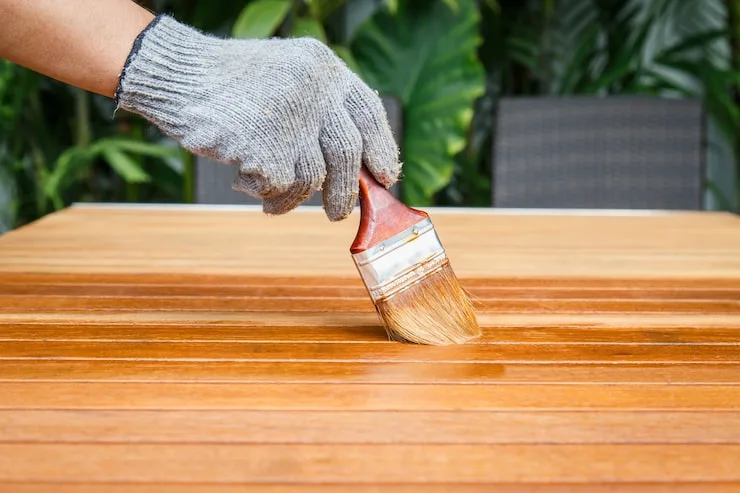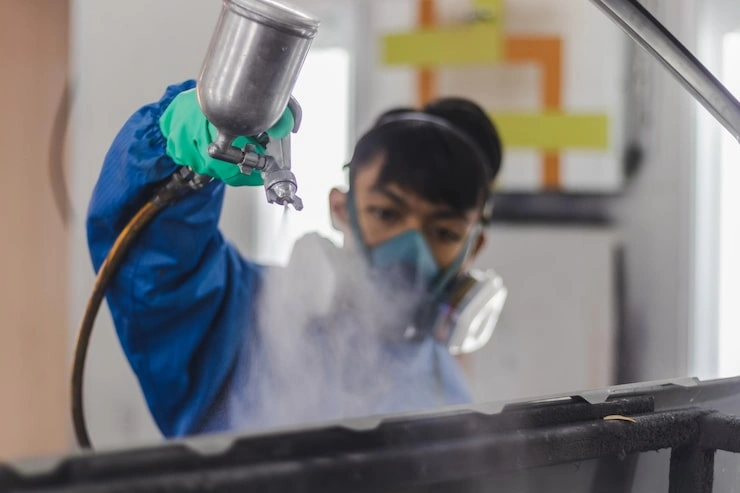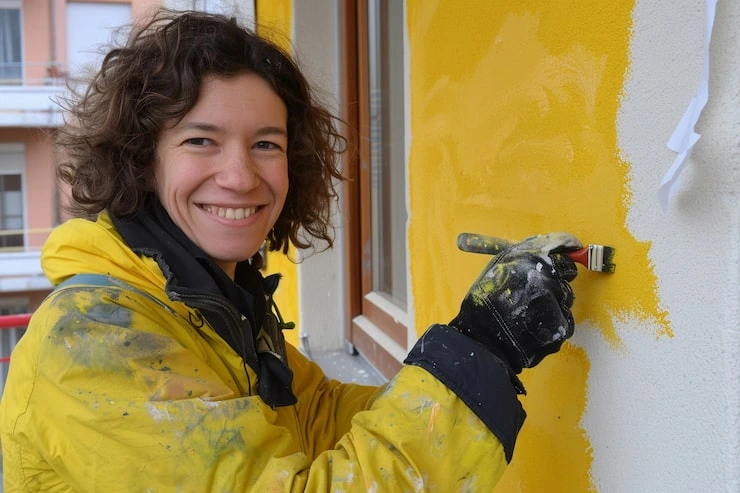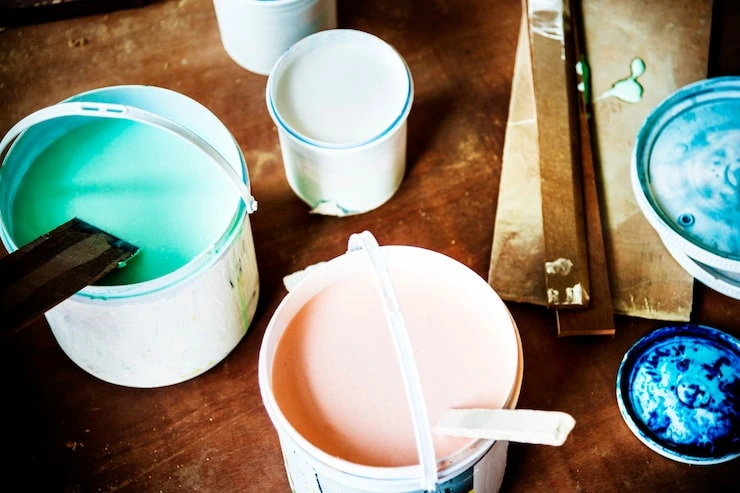When it comes to choosing the right paint for your home or business, there’s more to consider than just color and finish. The types of chemicals in paint, particularly volatile organic compounds (VOCs), can significantly impact indoor air quality, the environment, and your overall health. VOC paint has become a topic of interest, as consumers look for safer and eco-friendly alternatives. At Intercolor Painting, where we provide expert painting services in Seattle, we prioritize not only aesthetics but also the safety and science behind the products we use. This article delves into what VOC paint is, how it affects your environment, and why low-VOC or VOC-free options may be the ideal choice for your next painting project.
What Are VOCs?
Volatile Organic Compounds (VOCs) are chemical compounds that easily evaporate at room temperature. These compounds are commonly found in many household products, including cleaning supplies, adhesives, and, of course, paints. In paint, VOCs help the liquid paint dry and adhere to surfaces more effectively. However, as they evaporate, they release gases into the air, contributing to air pollution and health issues.
Common VOCs Found in Paint
Some commonly found VOCs in paint include:
- Formaldehyde
- Benzene
- Toluene
- Xylene
While these compounds can improve paint performance, they come with environmental and health risks, which has led to the development of low-VOC and VOC-free paints.
The Impact of VOCs on Health and the Environment
VOCs don’t just impact the quality of the paint job; they can also affect the air quality in the painted space. Here’s how VOCs can impact health and the environment:
Health Risks
Exposure to VOCs can lead to several health issues, especially in poorly ventilated areas. Some potential health risks include:
- Short-term effects: Headaches, dizziness, respiratory irritation, and nausea.
- Long-term effects: Long-term exposure has been associated with more serious health issues, including liver and kidney damage, nervous system complications, and an increased risk of certain cancers.
Environmental Impact
VOCs contribute to air pollution by forming ground-level ozone and smog. These compounds react with other pollutants in the air, reducing air quality and contributing to climate change. When you choose low-VOC or VOC-free paints, you’re actively reducing harmful emissions and supporting a healthier environment.
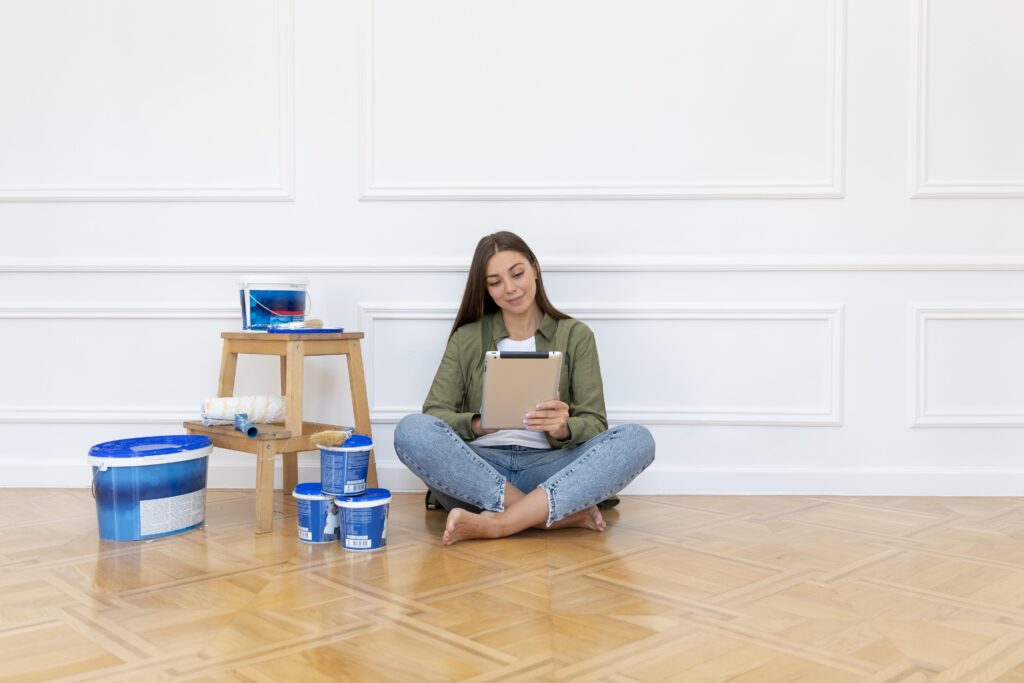
Types of VOC Paints: High-VOC, Low-VOC, and VOC-Free Paints
The painting industry has responded to consumer demand for safer alternatives by developing different types of VOC paints. Here’s a closer look at the types available and how they differ:
High-VOC Paints
These are traditional paints containing higher levels of VOCs. They are typically oil-based and known for their durability and smooth finish. However, due to their high VOC content, they release more toxic fumes and pose greater health risks during and after application.
Low-VOC Paints
Low-VOC paints contain significantly fewer VOCs than traditional paints, usually fewer than 50 grams per liter. They are widely available, come in a variety of finishes, and provide good durability without the same level of off-gassing as high-VOC options.
VOC-Free Paints
Also known as zero-VOC paints, these options contain minimal to no VOCs (typically under 5 grams per liter). Although they are the safest option, some VOC-free paints may still contain trace amounts of VOCs from added pigments. However, they are still a preferred choice for sensitive environments such as homes with children, elderly residents, or individuals with respiratory conditions.
How to Identify VOC Levels in Paint
If you’re shopping for paint, you may see VOC information on the label, but knowing what to look for can make a difference in your choice. Here’s a guide to help you read paint labels for VOC content:
- VOC Measurement: VOCs are measured in grams per liter (g/L). Low-VOC paints generally contain less than 50 g/L, and VOC-free paints contain less than 5 g/L.
- Certifications: Look for certifications such as Green Seal, GREENGUARD, or other eco-labels that indicate the paint has met certain environmental standards.
- Ingredients List: If the ingredients are listed, avoid products with high levels of formaldehyde, benzene, and other common VOCs.
At Intercolor Painting, we use high-quality, eco-friendly paint options with low or no VOCs whenever possible to ensure a safer environment for our clients in Seattle.
Benefits of Using Low-VOC and VOC-Free Paints
Switching to low-VOC or VOC-free paints offers several benefits that make the painting experience more enjoyable, safer, and better for the environment. Here’s why more people are opting for these eco-friendly alternatives:
Healthier Indoor Air Quality
Low-VOC and VOC-free paints drastically reduce the amount of harmful chemicals released into your home or office space. This can lead to fewer symptoms like eye and throat irritation and makes it safer for pets, children, and sensitive individuals.
Reduced Environmental Impact
By choosing low-VOC paints, you’re minimizing your contribution to air pollution and supporting sustainability. Eco-friendly paints help decrease smog formation and contribute to cleaner air quality in your community.
Less Odor
One of the most noticeable advantages of low-VOC paints is their reduced odor. With little to no off-gassing, these paints create a more pleasant environment during and after painting, especially in spaces that are frequently used or have limited ventilation.
Faster Occupancy
Since low-VOC and VOC-free paints release fewer fumes, freshly painted areas are safe to occupy sooner. This is a major advantage for commercial spaces or households that need to use the painted rooms shortly after the project is complete.
Choosing the Right Low-VOC Paint for Your Project
Selecting a paint brand and product with low VOC content is an essential step in creating a safe and attractive finish. Here’s what to consider when choosing low-VOC paints:
- Durability and Washability
- While VOC-free paints are safer, some lower-quality options may sacrifice durability. Look for reputable brands known for producing long-lasting low-VOC paints, especially for high-traffic areas.
- Finish Options
- Low-VOC paints come in various finishes, such as matte, satin, and gloss. Choose a finish that meets your aesthetic preferences and maintenance needs.
- Color Range
- Some VOC-free paints may offer a limited color palette, so if a specific color is important, research available options in advance.
Intercolor Painting is committed to using high-quality paints that not only meet aesthetic standards but also prioritize the health and well-being of our Seattle clients. We’ll help you choose the best paint for your space, ensuring a beautiful, safe, and durable result.
The Future of VOC Paints and Eco-Friendly Innovations
The demand for sustainable, low-VOC products has encouraged paint manufacturers to innovate, creating high-performance paints with minimal environmental impact. As technology advances, expect to see even more options that balance beauty, durability, and safety. Future developments may include entirely VOC-free paint technologies, enhancing both air quality and performance.
Conclusion: Why Low-VOC Paints Matter for You and the Planet
Choosing low-VOC or VOC-free paints is a step toward a healthier, more sustainable lifestyle. From improved indoor air quality to reduced environmental impact, low-VOC paints offer benefits that go beyond just a beautiful finish. At Intercolor Painting, we proudly provide painting services in Seattle with a focus on quality, safety, and environmental responsibility. Whether you’re updating your home’s interior or refreshing an office space, we’re here to guide you in making informed choices that contribute to a healthier living environment.
Contact Intercolor Painting today to discuss your next project, and let us help you create a vibrant, eco-friendly space with our expertise in low-VOC painting solutions. Together, we can make your vision a reality, all while prioritizing your well-being and the health of our planet.
Looking for expert residential painter in seattle? Our painting contractors seattle offers top-quality exterior house painter seattle and commercial painting seattle. As a trusted painting company in seattle, we transform spaces with precision and care.
Read More: When Is the Best Time to Paint Your House Exterior?

